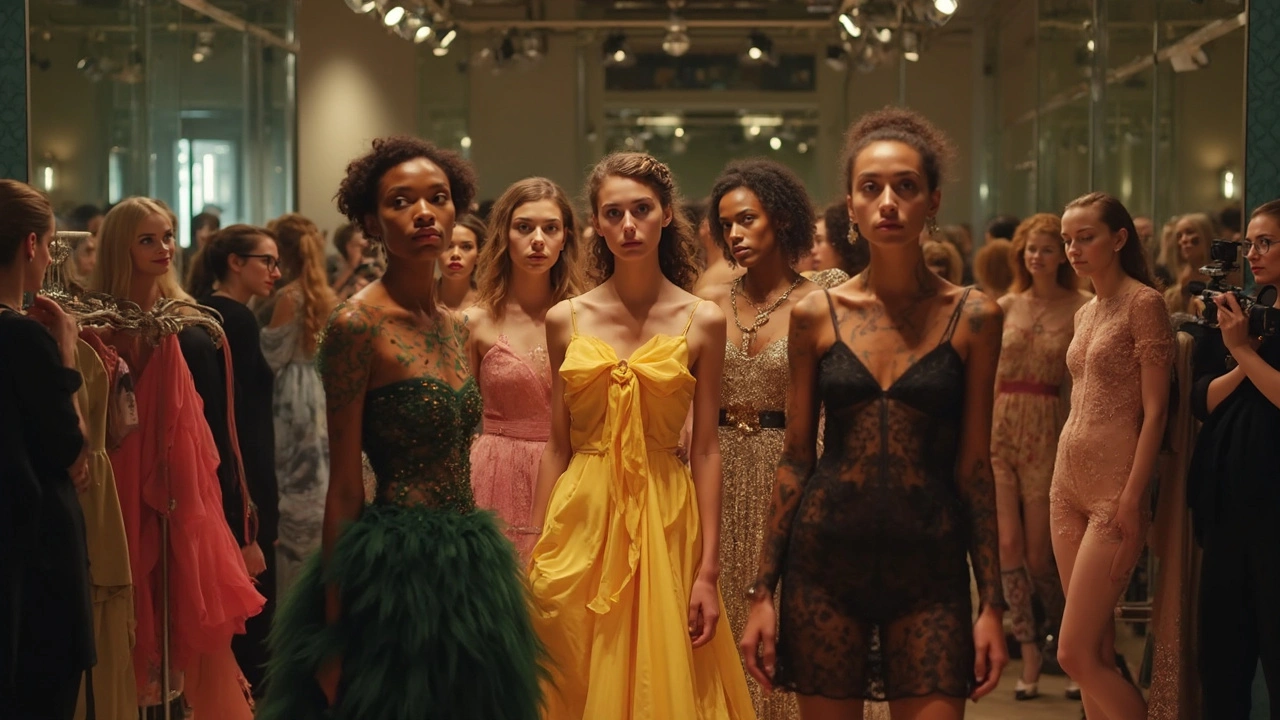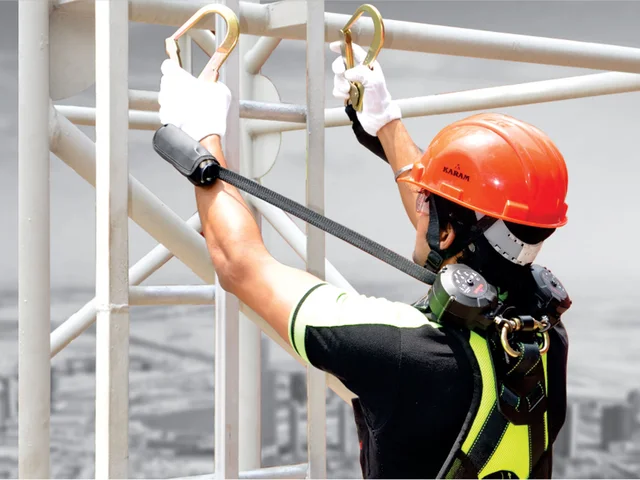Ever wondered how someone goes from snapping selfies to walking for big brands like Chanel or Gucci? There’s no magic formula, but there are real steps top models take to get noticed and stay on top. If you’re dreaming of modeling, or just curious about what it really takes, you’ll want real talk, not fairy tales.
First things first—most top models didn’t start in fancy studios. Some were scouted at the mall, others sent simple photos to agencies. But they all had to learn the ropes: how to work the camera, walk the runway, and handle lots of rejection. The fashion world isn’t as glamorous as Instagram makes it look, but breaking through is definitely possible if you know what’s expected.
You don’t need to be super tall or have perfect skin, but agencies look for unique looks, confidence, and professionalism. There are plus-size models, petite models, and even those who make it big thanks to their distinct features. The key? Figure out where you fit and play up what makes you different.
And here’s a little secret: The real hustle starts after your first show or campaign. Building a name means networking, staying reliable, and always being ready for the next big chance. Get used to working long days, meeting all kinds of people, and bouncing back from setbacks. If you keep at it, the rewards—both on and off the catwalk—can be totally worth it.
- How Top Models Rise: The Real Story
- Types of Modeling and Finding Your Niche
- Secrets Behind Runway Success
- How Models Boost Careers Off the Catwalk
How Top Models Rise: The Real Story
Ever notice how some people snap a selfie and days later they're shooting for a top brand? Yeah, it looks easy—but there’s a lot going on behind the scenes. Most top models didn’t just wake up famous. They hustled, faced rejection, and learned the ropes step by step.
Let’s break it down. The start almost always involves being scouted or applying to a legit agency. Gigi Hadid started modeling as a toddler, but she only blew up after signing with IMG Models as a teen. Kate Moss? She was discovered at JFK Airport at age 14. The industry is full of stories like this—sometimes it’s luck, but more often, it’s about grinding through endless castings and always being ready for a shot.
Once you land an agency, things get real. Agencies handle everything from contracts to bookings, and they’re tough about professionalism. A model’s schedule might mean being up at 5am for a shoot on Monday, then flying to Milan for a runway show Tuesday night. You need to stay healthy, look after your skin, and be ready for last-minute calls—because fashion waits for no one.
Here’s a quick look at what the first year for most model careers can look like:
- Test shoots for building a portfolio (lots of work, often unpaid at first).
- Open calls and go-sees where you meet designers and casting directors—this is like an audition.
- Occasional big breaks, like nabbing a campaign for a retail brand or walking in a city’s fashion week.
Not everyone gets a straight shot to the top, though. Tons of models juggle side jobs, deal with rejection, and even work gigs outside fashion just to keep going. The top-earning models—think Kendall Jenner or Liu Wen—often have a combo of strong social media presence and major contracts, but it took years of building a rep for being reliable and bringing real personality to their work.
Want some real numbers? Check out this table showing how rough the odds can be:
| Stage | Approx. Percentage Who Succeed |
|---|---|
| Applying to agencies | Around 10% |
| Booking steady gigs after signing | 5% |
| Reaching international fame | Less than 1% |
But don’t let this scare you off! Agencies are always looking for new faces, and there’s more room now than ever for diverse looks and personalities. Main thing? Don’t quit after your first “no.” Every top model has heard plenty of those before getting their big break.
Types of Modeling and Finding Your Niche
If you think all top models just strut the runway, think again! The modeling world has way more options than most people realize. You might picture high-fashion, but that’s just one piece of the puzzle. Let’s break down the main types so you can see where you might fit, or just get a real idea of what’s out there.
- Fashion (Editorial and Runway): These are the faces you see in Vogue, on international catwalks, or in those big campaign billboards. Fashion models usually fit strict size and height requirements—think 5’9” or taller for women. Runway’s a tough gig, but it’s the one that can launch you straight into fame if you hit it big.
- Commercial: Maybe you’ve seen models in TV ads, catalogs, or billboards promoting anything from shampoo to sneakers. Commercial models can have more varied looks and are all about connecting with everyday people. Gaps in height and age don’t matter as much here.
- Fitness: Fitness models work for brands like Nike and Under Armour, modeling athletic wear or showing off healthy, strong bodies. You’ll often see them in sports magazines or activewear ads.
- Plus-size: While it took the industry ages to catch on, plus-size models are finally showing up in major campaigns. Big names like Ashley Graham have proved you don’t need to be a size zero to crush it as a top model.
- Petite: If you’re under 5’7”, you’re not out of luck. Petite models usually do well in commercial print, beauty, swimsuit, and parts modeling (think only hands or feet!).
- Parts: Some folks make a full living modeling only their hands, feet, eyes, or hair for close-up ads— wild, right?
So where do you start? Focus on your strengths rather than trying to fit a mold. Agencies want people who stand out. Unique hair, freckles, body types—these can help you carve your niche. Remember, someone like Winnie Harlow (who has vitiligo) broke into the industry by refusing to hide what made her different. If you’re not sure which path is best, ask trusted friends or even a pro photographer which area might play up your natural assets.
Here’s a quick snapshot of the main types and typical height ranges for women to give you a feel for the expectations:
| Type | Common Height Range (Women) | Key Markets |
|---|---|---|
| High Fashion/Runway | 5’9” - 6’0” | New York, Paris, Milan |
| Commercial | 5’6” and up | Global |
| Plus-size | 5’8” and up | Global |
| Petite | 5’2” - 5’6” | LA, Tokyo, online brands |
| Fitness | 5’6” and up | LA, Miami, sports brands |
Your niche isn’t just about height or size—it’s what makes you memorable. Start following modeling tips from legit sources, build a simple portfolio, and reach out to agencies that match what you have to offer. Stay practical, realistic, and always check a modeling agency’s track record. Scams are real, especially online, so research before you sign anything.

Secrets Behind Runway Success
If you think getting on the runway is the hard part, wait till you figure out what it takes to not just walk but actually nail it every single time. The world of top models is full of little tricks and industry-tested tips that separate the pros from the beginners.
First off, mastering the runway walk is non-negotiable. There’s a reason big designers keep hiring the same faces. The confidence, posture, and rhythm you see are all results of serious practice. New models spend hours educating themselves on posture—they’re told to imagine balancing books on their heads and to put one foot directly in front of the other, in an almost single line. Sounds easy? Try it in sky-high heels with a blinding spotlight and a hundred cameras flashing at you.
- Preparation is everything: A lot of fashion industry pros recommend walking in front of a mirror or recording yourself until your walk feels natural but sharp.
- Confidence sells: It’s not just about looking pretty—or tough, depending on the show. You’re bringing a designer’s vision to life, so showing real attitude matters way more than just your face.
- Know the brief: Each designer has their own mood and specific walk they want from models. Some shows call for fierce and bold, others want soft and dreamy. Listen, ask questions, and adapt.
Then there are the tiny—but serious—details. Never underestimate the power of skin care and staying healthy. Top models have to be on their feet for long hours and keep their energy up. Many carry snacks like nuts, water, or protein bars to avoid crashing before a show starts. It’s about taking care of your body so you don’t run out of steam halfway through a day packed with fittings and rehearsals.
And now for a money stat: According to Business of Fashion’s 2024 modeling report, models who landed more than five major runway shows during Fashion Week saw a 70% jump in international bookings the following year. That’s why every new runway counts if you want runway success to turn into fame. A little chart for the numbers nerds:
| Fashion Shows Walked | Chance of Major Brand Campaign Within 12 Months |
|---|---|
| 1-2 | 12% |
| 3-5 | 29% |
| 6+ | 44% |
There’s also backstage hustle that nobody sees. (Here’s where it gets real: pro models show up early, memorize show orders, and keep a cool head no matter what.) Your ability to work well with stylists, makeup artists, and other models plays a huge role in whether you get called back for more gigs.
So yeah, it’s more than just “walking pretty.” Getting those legendary model career moments takes grit, smarts, and endless adaptability. Stay sharp, stay professional, and you’re already ahead of half the competition. That’s the real secret sauce behind crushing it on the catwalk.
How Models Boost Careers Off the Catwalk
Most people think that once you become a top model, it’s all about the runway and glossy magazines. But the real game-changer? What you do off the catwalk. Today’s fashion industry is less about fitting a mold and more about personality, entrepreneurship, and building a brand that’s bigger than your looks.
If you check out the biggest names in modeling, almost all of them have branched into new fields. Gigi Hadid, for example, has launched her own clothing lines. Tyra Banks started her own TV show and became an investor. And Karlie Kloss built a coding camp for girls. What they all have in common: they used their runway fame to kickstart something even bigger.
Want to follow in their footsteps? Here’s how many top models manage that jump:
- Social Media Power: Instagram, TikTok, and YouTube are where models interact with fans and brands. Posting behind-the-scenes content can land brand deals and even start their own businesses. For example, Kendall Jenner has over 290 million Instagram followers, turning social buzz into cash deals with big fashion and beauty brands.
- Brand Collaborations: Working with brands isn’t just about modeling clothes. It’s also about co-creating product lines or limited collections. Think of Hailey Bieber’s skincare brand, or when models drop capsule collections for sneaker companies.
- Acting and TV: Tyra Banks made a name with America’s Next Top Model, and Cara Delevingne moved into acting in movies like "Suicide Squad." Modeling teaches skills that transfer well into TV and film work.
- Business Launches: From gyms to tech startups, models like Karlie Kloss and Kate Moss have built serious businesses. Don’t forget, supermodel Iman launched a cosmetics company for women of color in the 1990s, and it’s still successful today.
You don’t have to be a household name to get started. A solid online presence and smart networking can help you find new gigs, attract brands, or even sell your own products.
| Model | Side Hustle | Notable Success |
|---|---|---|
| Karlie Kloss | Kode With Klossy (coding camp) | Thousands of girls taught nationwide |
| Iman | Iman Cosmetics | Major brand for women of color |
| Tyra Banks | TV Hosting, Investing | America’s Next Top Model, venture deals |
The main tip? Don’t rely just on modeling jobs. Build your reputation, explore what you care about, and use your model career as a launch pad. Most importantly, keep learning—whether that’s social media, business, or public speaking. That’s how you stay relevant when the runway lights turn off.





